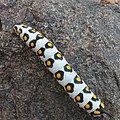
Hyles gallii, the bedstraw hawk-moth or galium sphinx, is a moth of the family Sphingidae. The species was first described by S. A. von Rottemburg in 1775.

Hyles lineata, also known as the white-lined sphinx, is a moth of the family Sphingidae. They are sometimes known as a "hummingbird moth" because of their bird-like size and flight patterns.

Callambulyx tatarinovii, or unmonsuzume (ウンモンスズメ) in Japanese, is a moth of the family Sphingidae. The species was first described by Otto Vasilievich Bremer and William (Wasilii) Grey in 1853.

Hyles hippophaes, the seathorn hawk-moth, is a species of moth in the family Sphingidae. The species was first described by Eugenius Johann Christoph Esper in 1789.

Marumba quercus, the oak hawk-moth, is a moth of the family Sphingidae. The species was first described by Michael Denis and Ignaz Schiffermüller in 1775.

Hyles livornica, the striped hawk-moth, is a moth of the family Sphingidae.

Hyles tithymali, the Barbary spurge hawk-moth, is a species of moth in the family Sphingidae first described by Jean Baptiste Boisduval in 1834. Genomic analysis places the entire species as a subspecies of Hyles euphorbiae. It is found in North Africa, the Canary Islands, Madeira, some islands in the Mediterranean Sea and in the mountains in Yemen.

Hyles dahlii is a moth of the family Sphingidae first described by Carl Geyer in 1828.

Clanis bilineata, the two-lined velvet hawkmoth, is a species of moth in the family Sphingidae first described by Francis Walker in 1866.
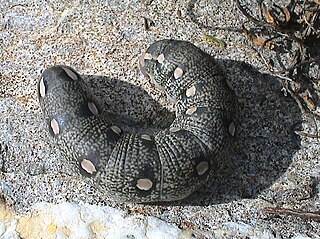
Hyles vespertilio is a moth of the family Sphingidae.

Marumba gaschkewitschii is a species of moth of the family Sphingidae first described by Otto Vasilievich Bremer and William (Wasilii) Grey in 1853. It is found in eastern Asia.

Hyles zygophylli, the bean-caper hawkmoth, is a moth of the family Sphingidae. The species was first described by Ferdinand Ochsenheimer in 1808. It is found in western and eastern Turkey, Armenia, eastern Transcaucasia, Daghestan, northern Syria, northern Iran, Turkmenistan, Kazakhstan, Uzbekistan, Kyrgyzstan, Tajikistan and northern Afghanistan. It is also found from western, northern and central Xinjiang province east to Shaanxi province and north to Mongolia. There is one record of a vagrant from Croatia.

Hyles nervosa, the Ladakh hawkmoth, is a moth of the family Sphingidae. The species was first described by Walter Rothschild and Karl Jordan in 1903. It is found in eastern Afghanistan, northern and western India, northern Pakistan and the extreme west of the Xizang province and Tibet.

Hyles sammuti is a moth of the family Sphingidae. Kitching and Cadiou (2000) treat it as a valid species, while Pittaway treats it as a subspecies of Hyles tithymali, seeing the larvae are very similar to Hyles tithymali mauretanica. Based on studies of the mitochondrial DNA, Hyles sammuti probably hybridises with Hyles euphorbiae.
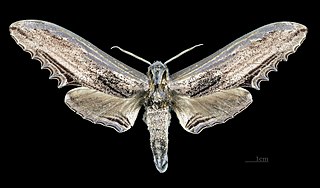
Langia zenzeroides, the apple hawkmoth, is a species of moth in the family Sphingidae. It was described by Frederic Moore in 1872.
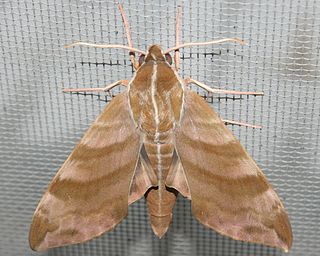
Ampelophaga rubiginosa is a moth of the family Sphingidae. It was described by Otto Vasilievich Bremer and William (Vasilii) Grey in 1853. It is found from north-eastern Afghanistan, east around the southern margin of the Himalaya to Yunnan, then throughout China to the Russian Far East, the Korean Peninsula and Japan. It is also found south through Thailand and Vietnam to Sumatra and Peninsular Malaysia.

Hyles siehei is a moth of the family Sphingidae. It is known in southern and eastern Turkey, Armenia, northern Syria, northern Iraq and northern Iran. Then probably south along the Zagros Mountains of Iran to the Kerman Province. It is also known from lowland southern Kazakhstan, from the shores of the Caspian Sea across to the Chinese border, southern Uzbekistan and northern Turkmenistan.

Hyles robertsi, the spurge hawkmoth, is a moth of the family Sphingidae. The species was first described by Arthur Gardiner Butler in 1880. It is known from Iran, the Kopet Dag Mountains of Turkmenistan, eastward to central and eastern Afghanistan, Kashmir and the Pamirs. It is also known from western Pakistan. Some authors consider it to be a subspecies of Hyles euphorbiae.
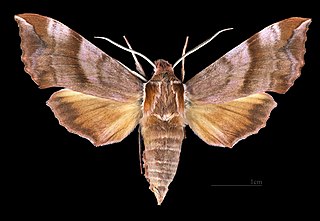
Clarina syriaca is a moth of the family Sphingidae. *

Meganoton analis, the grey double-bristled hawkmoth, is a moth of the family Sphingidae. It is known from India, Nepal, southern and eastern China, northern Thailand, northern Vietnam, Peninsular Malaysia, Indonesia, Taiwan, the southern part of the Russian Far East, South Korea and Japan.








